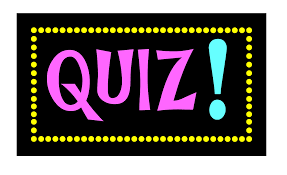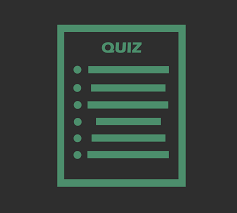الخطوط العريضة للقسم
-
-
Topic
Number
PATHOPHYSIOLOGY INTRODUCTION
Definitions and Pathophysiology Framework
Etiology, Pathogenesis, Clinical Manifistations, and Treatment Implications.
1
BASICS AND PRINCIPLES OF PATHOPHYSIOLOGY
Cellular Response to Injury
· Cellular adaptation
· Mechanisms of Cell Injury
· Manifestations of cellular injury
· Cell death
Tissue repair
· Steps in tissue (wound) repair
· Inflammation and Tissue repair
Edema
2
PATHOPHYSIOLOGY OF CARDIOVASCULAR DISORDERS
Hypertension and Hypotension
· Diseases of coronary arteries (CAD):
· Atherosclerosis
· Angina and Myocardial Infarction
Disease of cardiac muscle
· Heart failure and Shock
Abnormalities Of Cardiac Conduction
3
PATHOPHYSIOLOGY OF STROKE
· Cerebral Vascular Accidents (CVA)
4
PATHOPHYSIOLOGY OF THE RESPIRATORY SYSTEM
· Obstructive and Restrictive diseases
5
PATHOPHYSIOLOGY OF THE GASTROINTESTINAL SYSTEM
· Oral Inflammatory Lesions
· Diseases of the Esophagus
· Diseases of Stomach
· Disease of the Intestine (Irritable bowel disease and Inflammatory Bowel disease)
6
PATHOPHYSIOLOGY OF RENAL SYSTEM
· Renal disorders: Nephrotic and Nephritic Syndromes
· Major Renal diseases
· Cystitis and Pyelonephritis
7
PATHOPHYSIOLOGY OF ENDOCRINE SYSTEM
· Diabetes
8
-
Reference
Pharmacotherapy: a pathophysiological approach, Joseph T. DiPiro, Gary C. Yee, L. Michael Posey, Stuart T. Haines, Thomas D. Nolin, Vicki L. Ellingrod,11th edition; 2021; ISBN-13: 978-1260116816

-
-
-
OUTCOMES
- Define pathophysiology and the concepts of health and disease
- Describe the aspects of the disease process including etiology, pathogenesis, signs and symptoms, etc
-
-
The following videos explain Clinical Manifistations, Stages and Clinical Course, and Treatment Implications, followed by an interactive video and an assessment quiz.
-
Clinical Manifistation
Stages and Clinical Course
Treatment Implications
-
-
-
OUTCOMES
- Understand Cellular Responses to Injury.
- Explain Mechanisms of Cell Injury.
- Identify Manifestations of Cellular Injury.
- Differentiate Types of Cell Death.
- Understand Tissue Repair Processes.
- Discuss Inflammation and Its Role in Tissue Repair.
- Understand the causes and effects of edema.
-
-
The following videos explain the main concepts of the chapter, followed by an assessment quiz.
-
Cellular Adaptation
Apoptosis Vs. Necrosis
Inflammation
Wound healing
Gangrene
Edema
-
-
-
OUTCOMES
- Understand the Pathophysiology of Cardiovascular Disorders.
- Describe the Pathogenesis of Hypertension.
- Identify Clinical Presentations and Diagnostic Measures.
- Understand Coronary Artery Diseases (CAD).
- Recognize Manifestations of Heart Failure.
- Understand the Concept of Shock.
- Classify and Analyse Arrhythmias.
-
-
Hypertension-and-Hypotension
- The following are videos that explain major concepts, followed by an interactive video with interactive questions.
- Hypertension is a major cause of premature death worldwide.
-
Hypertension Introduction and Measurement
Hypertension- risk factors
Hypertension- pathogenesis
Hypertension- classification
Hypertension- clinical presentation, complications
Secondary hypertension- Malignant Hypertension- Hypotension
-
The following videos explain the concepts of Hypertension and Atherosclerosis
-
Hypertension
Atherosclerosis
-
Angina pectoris and Myocardial Infarction
- The following are videos that explain both concepts, followed by an interactive video with interactive questions.
- Angina pectoris results from myocardial ischemia caused by an imbalance between myocardial blood supply and oxygen demand.
- Acute myocardial infarction (MI) indicates irreversible myocardial injury resulting in necrosis of a significant portion of myocardium (generally >1 cm).
-
Angina and Silent ischemia
Myocardial infarction
Complication of Myocardial infarction- compensatory mechanisms- comparisons (Angina vs. MI)
-
Congestive Heart Failure and Cardiogenic Shock
- The following is an interactive video that explains both concepts, with interactive questions.
- Congestive heart failure, or heart failure, is a long-term condition in which your heart can’t pump blood. In contrast, cardiogenic shock is a life-threatening condition in which your heart suddenly can't pump. The heart won't pump enough in both conditions to meet your body’s needs.
-
Heart failure
Shock
-
Arrhythmia
- The following is an interactive video that explains the concept of arrhythmia, with interactive questions.
- Cardiac arrhythmias are significantly associated with increased risks of cardiovascular complications and sudden death.
-
Abnormalities of Cardiac Conduction- Arrhythmia Introduction
Abnormalities of Cardiac Conduction- Arrhythmia - factors
Abnormalities of Cardiac Conduction- Types of arrhythmia
-
The following videos explain the concept of Re-entry, and an assessment quiz.
-
Cardiology: Re-entry Circuits Re-entry tachycardia mechanism
-
-
-
OUTCOMES
- Understand the definition, types, and risk factors of stroke.
- Explain the pathophysiology of ischemic stroke, including the concept of ischemic penumbra.
- Recognize the symptoms of ischemic and hemorrhagic stroke.
- Emphasize the importance of rapid diagnosis and treatment of acute stroke, as "time is brain".
- Describe the diagnostic considerations and the main goals of stroke treatment.
- Understand the potential complications and disabilities caused by stroke.
-
-
The concept of ischemic penumbra is further explained in the following video:
-
-
The following is an assessment Quiz:
-
-
-
OUTCOMES
- Understand the definition, types, and risk factors of stroke.
- Understanding normal respiratory function, using diagnostic approaches.
- Differentiate between obstructive and restrictive diseases
- Recognize the pathophysiology of common respiratory diseases.
- Describe disease progression and clinical presentation.
-
-
Diffuse Pulmonary Diseases
- The following are videos explaining diffuse pulmonary diseases that can be classified into two categories: Obstructive and Restrictive diseases.
- Followed by an assessment quiz.
-
Respiratory system- Emphysema and Chronic bronchitis
Respiratory system- Asthma part 1
Respiratory system- Asthma part 2
Respiratory system- Bronchiectasis and restrictive pulmonary diseases
-
-
-
OUTCOMES
- Understand the pathophysiology, clinical features, and management of various oral inflammatory lesions, including aphthous ulcers, herpes simplex virus infections, and oral candidiasis.
- Recognize the causes, symptoms, and complications of gastroesophageal reflux disease (GERD), including its association with esophageal inflammation and metaplasia.
- Differentiate between acute and chronic gastritis, focusing on the role of Helicobacter pylori infection in developing chronic gastritis and peptic ulcer disease.
- Describe the features and pathogenesis of irritable bowel syndrome (IBS), a functional gastrointestinal disorder characterized by recurrent abdominal pain and altered bowel habits.
- Distinguish between Crohn's disease and ulcerative colitis, the two main types of inflammatory bowel disease, in terms of their clinical presentation, pathological features, and management.
-
-
Gastrointestinal Diseases
The following are videos that explain major gastrointestinal diseases, followed by an assessment quiz.
-
Gastrointestinal System - oral inflammatory lesions
Gastrointestinal System - Oesophageal and Stomach
Gastrointestinal System - disorders of the Intestine and Colon
-
The following videos explain the concepts of H. Pylori infections and Inflammatory Bowel Disease
-
H.Pylori
Inflammatory Bowel Disease
-
-
-
OUTCOMES
- Understand the mechanisms behind conditions like chronic kidney disease (CKD), urinary tract infections (UTIs), nephrotic syndrome, glomerulonephritis, and acute kidney injury (AKI).
- Discuss the progression of diseases, from acute to chronic stages.
- Identify the symptoms associated with urinary diseases, such as haematuria, proteinuria, edema, dysuria, and changes in urine output.
- Examine the factors contributing to urinary diseases, including hypertension, diabetes, infections, genetics, and environmental factors.
-
-
The following video explains the Urinary Tract Infections, followed by an assessment quiz.
-
-
-
-
-
OUTCOMES
- Describe the process of glucose metabolism, including the functions of the liver, pancreas, and muscles.
- Differentiate between Type 1, Type 2, and insulin resistance regarding underlying pathogenesis, causes, and mechanisms.
- Describe how chronic high blood glucose (hyperglycemia) leads to complications, such as damage to blood vessels, nerves, and organs, retinopathy, nephropathy, neuropathy, and cardiovascular disease.
- Discuss hypoglycaemia and its symptoms, classifications, and treatment.
-
-
Diabetes
- The following are videos that explain Diabetes.
- Followed by an assessment quiz.
-
Endocrine- Introduction
Diabetes - Definitions
Diabetes - Categorization and Simplified classification
Diabetes -Pathogenesis, manifestations and complications, and Hypoglycaemia
-









